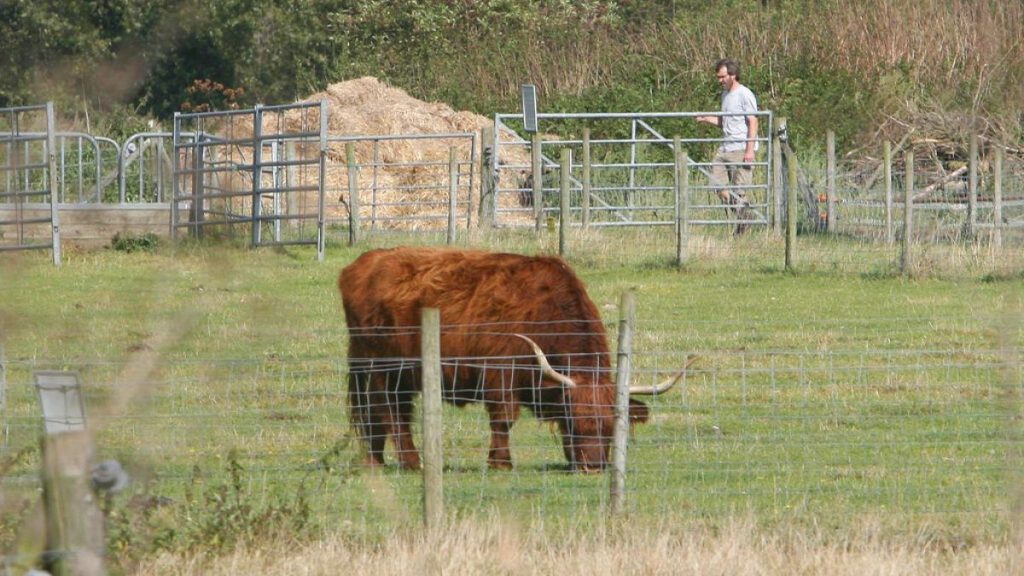A new strain of bluetongue disease has been detected across Europe, first appearing in Dutch farms before spreading to France, Belgium, Germany, Denmark, and Luxembourg. The French department of Isère has been hit particularly hard by the epidemic, with 31 animals already infected and potentially a hundred more cases suspected. The virus, carried by small midges, causes symptoms such as mouth ulcers, difficulty breathing, fever, and can be fatal in serious cases. Sheep farmer Cédric Ruzzin in Poliénas has seen a significant number of his animals die from the disease. Officials believe that farms and local government were late to recognize the new strain of the virus, allowing it to spread to herds of cattle before preventative measures could be taken. In response, the French government has distributed 6.4 million doses of vaccine to the most affected areas, with 1.1 million doses for sheep and 5.3 million reserved for cattle. Regulated zones have also been implemented in affected areas to contain the outbreak.
Bluetongue disease has not only impacted France, but has also been causing outbreaks in Belgium, where over 500 farms have been affected. Belgium’s Federal Minister for Agriculture, David Clarinval, has referred to the situation as a crisis due to the impact of bluetongue cases on the agricultural sector. The new strain of the virus, referred to as the BTV3 serotype, has raised concerns of a larger outbreak in regions such as Nord, Aisne, Ardennes, and other areas where the disease has been detected. Unfortunately, the late recognition of the virus in these regions has made it difficult to control the spread, leading to challenges in addressing the symptoms in affected animals. Aurore Tosti, Director of Isère Health Defence Group, acknowledges the difficulty in combating the disease once it has spread within a herd, as the focus must shift to treating the symptoms rather than curing the disease itself. Despite efforts to distribute vaccines and implement regulated zones, some farms have already suffered losses due to the late response to the outbreak.
The impact of bluetongue disease on livestock has raised serious concerns for farmers and government officials across Europe. The virus, carried by tiny midges, poses a significant threat to sheep and cattle, causing symptoms that can be fatal in severe cases. The new strain of bluetongue has led to extensive outbreaks in various countries, prompting governments to take urgent action to contain the spread and treat affected animals. With a focus on alleviating symptoms and preventing further infections, efforts such as vaccine distribution and regulated zones have been implemented, although challenges remain in controlling the disease once it has spread within herds. The severity of the situation has led to calls for the agricultural sector to be recognized in crisis, with farmers experiencing losses and struggling to protect their livestock from the impacts of bluetongue disease.
The urgency of the situation in response to the new strain of bluetongue disease has prompted the French government to take swift action by distributing millions of doses of vaccine to affected areas. The prioritization of vaccination for sheep and cattle aims to prevent further infections and mitigate the impact of the disease on livestock. Despite these efforts, some farms have already experienced significant losses, highlighting the challenges of addressing bluetongue once it has spread within herds. The late recognition of the new strain of the virus in regions such as Isère has made it difficult to contain the outbreak, emphasizing the importance of early detection and preventative measures in combating the disease. As farmers and officials grapple with the devastating effects of bluetongue on livestock, the need for coordinated action and support for the agricultural sector is paramount in addressing the crisis and protecting animals from further harm.
The spread of bluetongue disease across Europe serves as a stark reminder of the risks posed by infectious diseases in the agricultural sector. The rapid transmission of the virus from country to country highlights the interconnected nature of livestock farming and the importance of coordinated efforts to prevent and control outbreaks. The severity of the symptoms caused by bluetongue, including mouth ulcers, difficulty breathing, and fever, underscores the threat it poses to sheep and cattle, with fatal consequences in some cases. The response to the new strain of the virus, particularly in regions like Isère and Belgium, illustrates the challenges of addressing bluetongue once it has taken hold in herds, emphasizing the need for early detection and intervention to protect livestock and minimize economic losses for farmers. As governments and farmers work to contain the outbreak and support those affected by the disease, the impact of bluetongue serves as a cautionary tale of the importance of preparedness and vigilance in confronting emerging infectious threats in the agricultural sector.


